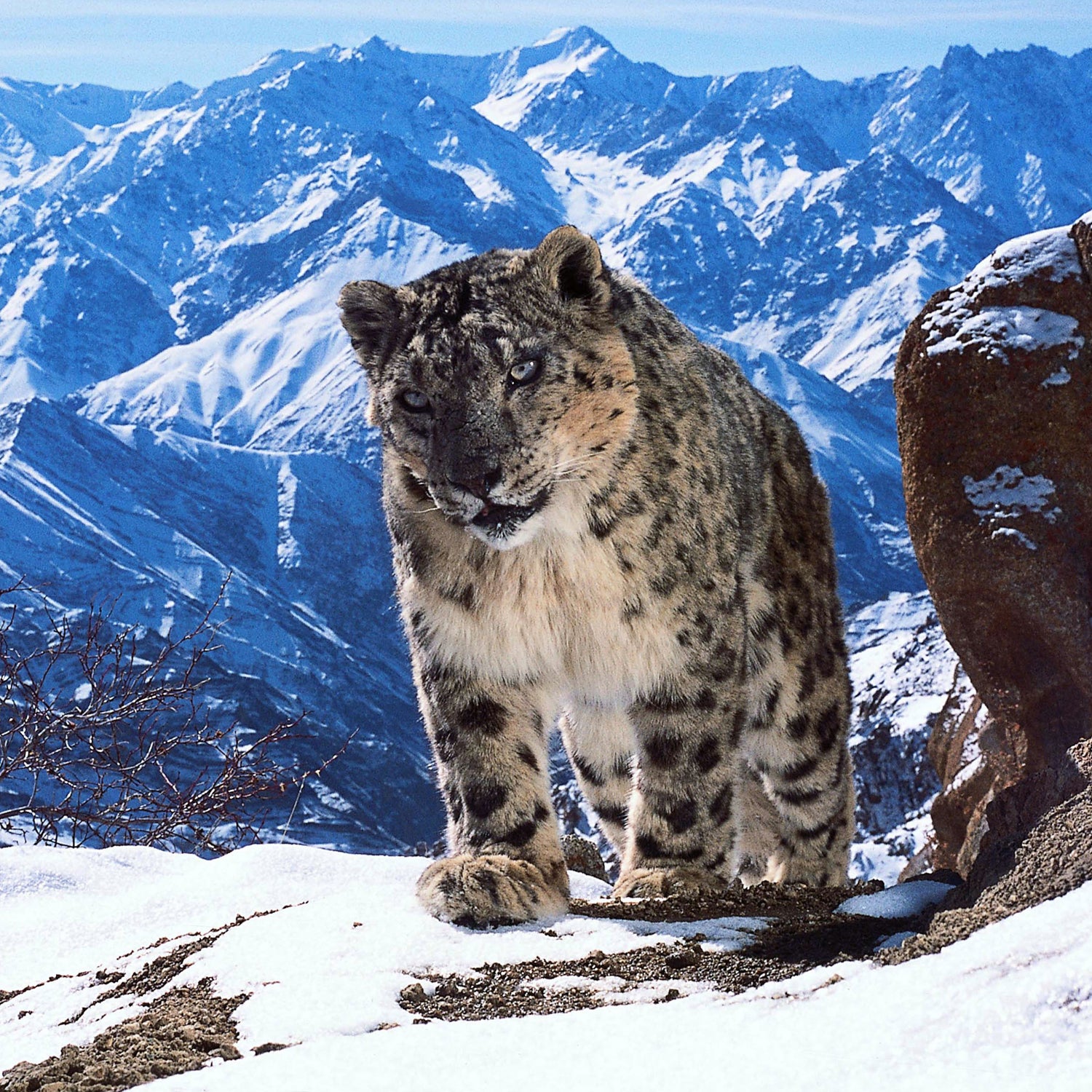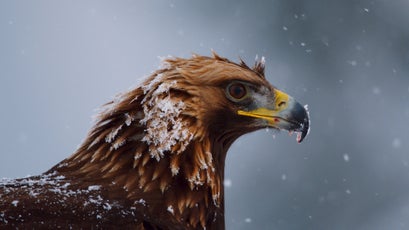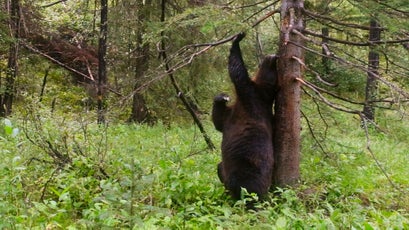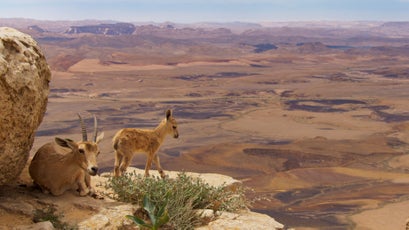The camera work in Planet Earth II is so good that it makes 2006’s Planet Earth look like it was filmed with a cellphone. The first episode of the six-part series premieres February 18. Like the original, each episode of Planet Earth II gives viewers an intimate look at a specific environment—from islands to mountains to cities—all narrated by 90-year-old David Attenborough and with music from Hans Zimmer.
Part of the reason for the ten-year gap between series: it takes an unreal amount of time and logistics to capture shots worthy of what was the when it premiered in the UK in November. The entire Planet Earth II crew shot footage in 40 different countries on 117 different filming trips. The second episode alone, from concept to final product, took more than three years to create. “Mountains” features dexterous ibex prancing on desert cliffs, golden eagles soaring in the Alps, and a scene that’s never been captured on camera before: four snow leopards in one place at one time, recorded with a long-range camera across a talus-covered valley in the Indian Himalayas. Anyone who’s will understand the magnitude of seeing just one snow leopard in person. Anderson says there have been only two other times (not captured on camera) when four snow leopards were seen in one place.
We asked British producer Justin Anderson and Montana photographer John Shier, who were responsible for the “Mountains” episode, what it took to get that one perfect shot.
OUTSIDE: How hard was it to get that much footage of snow leopards?
JUSTIN ANDERSON: All the mountain shoots were tough. In the series, we’re trying to have an immersive feeling, to be able to see a place through the eyes of the animals.
It wasn’t a decision I made lightly to go after the snow leopard. It’s a bold task. I remember being on a flight over the Himalayas and seeing the size of it and thinking, “How are we going to find a cat in this place?”
We basically filmed the cats over three years with three visits. The first trip ran for seven weeks with two camera operators, the second ran for four weeks with two camera operators, and the third ran for four weeks with one camera operator.
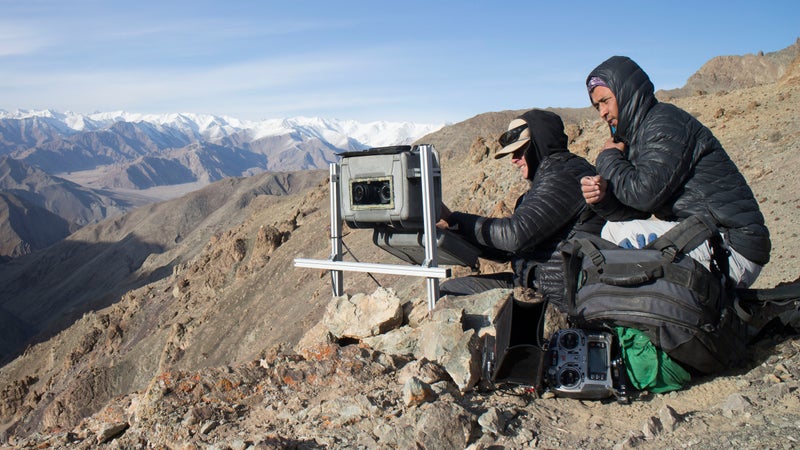
How much time were you on the snow leopard shoot compared with the others?
ANDERSON: Off the top of my head, filming the ibex in Israel took six weeks, golden eagles took four weeks, tree-rubbing grizzlies took three weeks (but the remote cameras were in for four months), bobcats took five weeks, and flamingos took three weeks.
JOHN SHIER: You can assume they spent three to four weeks on any sizable behavioral sequences for the series.
What did a day filming the snow leopard scenes look like for you?
SHIER: My days usually started with getting up as the local spotters headed out to look for cats at sunrise. I’d hang around camp waiting for word of a spotted cat. Because the camp was centrally located at the junction of several drainages, this was the most efficient way to respond to sightings. Rather than hiking up one drainage, and then having to hike back down and up another, I’d just be prepped and ready to go at camp with my local porters.
If no cat was spotted, I’d often take a hike in the afternoon to scout for cat signs and check the camera traps. This might take two to three hours. I’d get back to camp around sunset, and that would be it for the day.
If the spotters did spot a cat first thing, or if we knew where one approximately was the day before, we’d start out with the camera kit before sunrise and hike to where the spotters were looking for the cat. This could be a two-hour hike up as much as 3,000 to 3,500 vertical feet to some spots. We would get into position and spend the rest of the day with the cat, following them as they moved, and sitting and waiting when they settled down. Some days, this would be eight to ten hours of sitting and watching. We’d stay with the cats until the sun set and we ran out of light.
ANDERSON: Often what would happen is the cat would bask in the sun throughout most of the day, meaning the crew would have to wait for hours for any activity. The cats would suddenly become active again right at the end of the day, as it was getting dark—so there was a magic hour when they seemed to move around more and we could get shots, but we were often fighting the approaching darkness and the ability to see and film the cats in the increasing gloom.
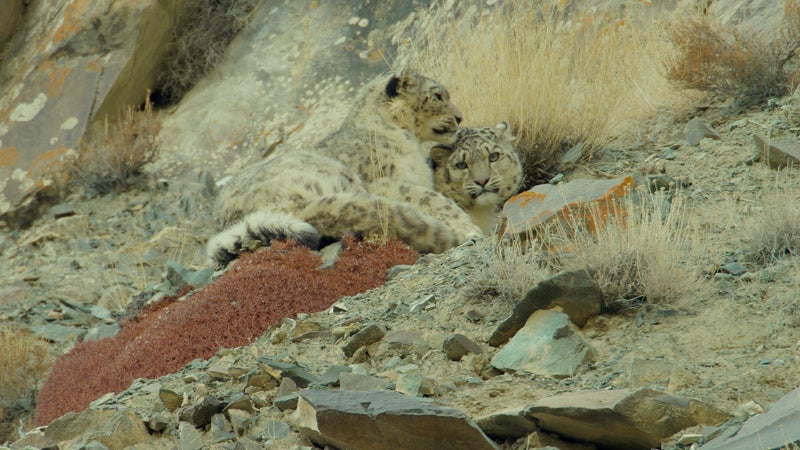
What techniques did you use to film them? How hard were they to find?
ANDERSON: It was built on a lot of hard work divided into two approaches. The first was a traditional wildlife photography approach: running up the slopes carrying the gear and the tripod, and relying on the local guides, who could see what I thought were rocks to be cats. The guides got up really, really early and looked for cats all day, and most days they didn’t see any. The days they did, we had to scramble.
The other half of the approach was putting out remote camera traps. The guides knew where the animals wanted to walk on these amazing mountain ridges and the rocks the females like to visit. We used drones, a hang glider, and of course traditional camera work [running up and down mountainsides]. We put out loads of camera traps. We had guys going out and changing card after card, and after three years, they compiled the footage. We had 20 traps in total on a rotating system, some being repaired or moved.
SHIER: The trap is basically a DSLR camera that’s been hacked with an infrared trail system. It’s a bunch of parts that need to work in unison.
ANDERSON: We ended up with a lot of footage—snow leopards rubbing and spraying in all types of weather. We installed the camera traps each year we went to the Himalayas. They were in for approximately a year in total.
How about false triggers? Were they sensitive?
SHIER: That’s the bane of our existence with those [cameras]. We got lots of random triggers—the sun sometimes triggers it, sometimes its birds or grass. Sometimes you get 50 photos of nothing.
Did you learn anything about how to spot the cats with the naked eye?
ANDERSON: It’s just knowing where they’re likely to be on a ridge, the pathways they like to use. They use the landscape selectively. I learned to look for the pale yellow color of their undersides, a contrast between dark and light. I’m still looking for them in the UK mountains [laughs].
Were you ever frustrated dealing with the challenges and the waiting game?
SHIER: There were a couple of days that were pretty rough. We were up over 15,000 feet carrying 60 to 70 pounds of equipment in the Himalayas. In the end, though, it was pretty easy compared to filming mountain lions here [in Montana], because there’s no cover for the snow leopard in the Himalayas.
ANDERSON: I’m very proud of [the episode]. I was never bored. Three-and-a-half years seems like a long time, but it went fast. The mystique stayed.
What was it like to finally see a snow leopard?
ANDERSON: I must’ve watched the first shot [of the episode, a close-up of a snow leopard] about a thousand times. It’s got snow on its back, and it looks directly at the camera. I think the first time I saw one, I felt like my soul was flying. When I saw one in a spotting scope for the first time, I jumped for joy like a little kid. Hopefully the people watching feel the privilege.
Planet Earth II premieres February 18 on BBC America, AMC, and SundanceTV at 9 p.m. (ET). The “Mountains” episode will air February 25.


